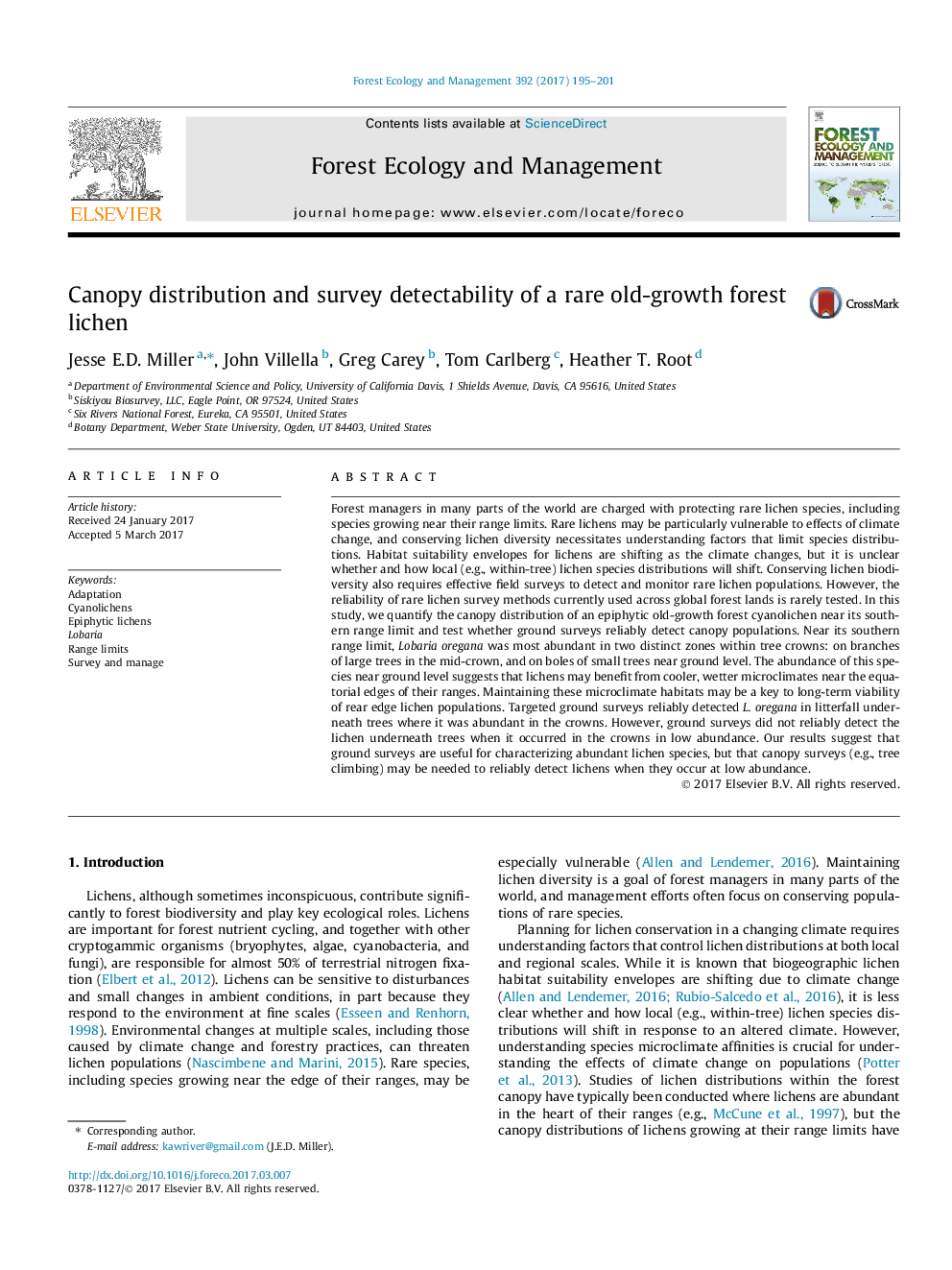| Article ID | Journal | Published Year | Pages | File Type |
|---|---|---|---|---|
| 4759478 | Forest Ecology and Management | 2017 | 7 Pages |
Abstract
Forest managers in many parts of the world are charged with protecting rare lichen species, including species growing near their range limits. Rare lichens may be particularly vulnerable to effects of climate change, and conserving lichen diversity necessitates understanding factors that limit species distributions. Habitat suitability envelopes for lichens are shifting as the climate changes, but it is unclear whether and how local (e.g., within-tree) lichen species distributions will shift. Conserving lichen biodiversity also requires effective field surveys to detect and monitor rare lichen populations. However, the reliability of rare lichen survey methods currently used across global forest lands is rarely tested. In this study, we quantify the canopy distribution of an epiphytic old-growth forest cyanolichen near its southern range limit and test whether ground surveys reliably detect canopy populations. Near its southern range limit, Lobaria oregana was most abundant in two distinct zones within tree crowns: on branches of large trees in the mid-crown, and on boles of small trees near ground level. The abundance of this species near ground level suggests that lichens may benefit from cooler, wetter microclimates near the equatorial edges of their ranges. Maintaining these microclimate habitats may be a key to long-term viability of rear edge lichen populations. Targeted ground surveys reliably detected L. oregana in litterfall underneath trees where it was abundant in the crowns. However, ground surveys did not reliably detect the lichen underneath trees when it occurred in the crowns in low abundance. Our results suggest that ground surveys are useful for characterizing abundant lichen species, but that canopy surveys (e.g., tree climbing) may be needed to reliably detect lichens when they occur at low abundance.
Related Topics
Life Sciences
Agricultural and Biological Sciences
Ecology, Evolution, Behavior and Systematics
Authors
Jesse E.D. Miller, John Villella, Greg Carey, Tom Carlberg, Heather T. Root,
